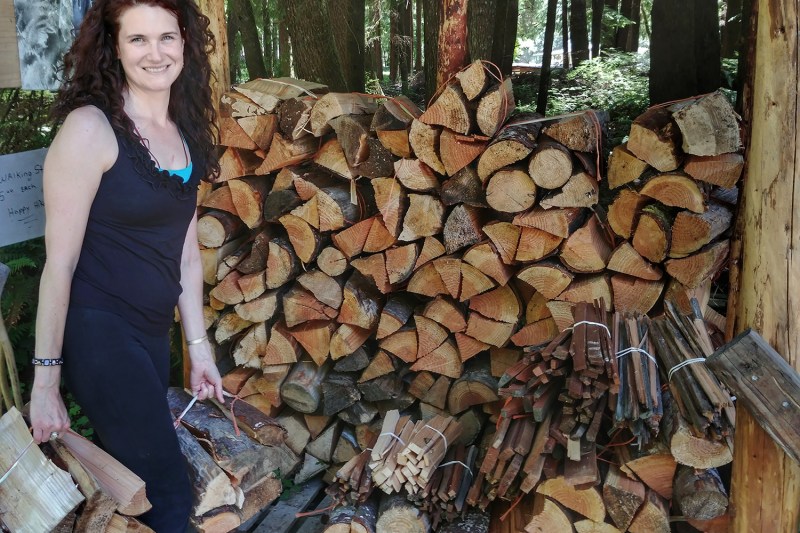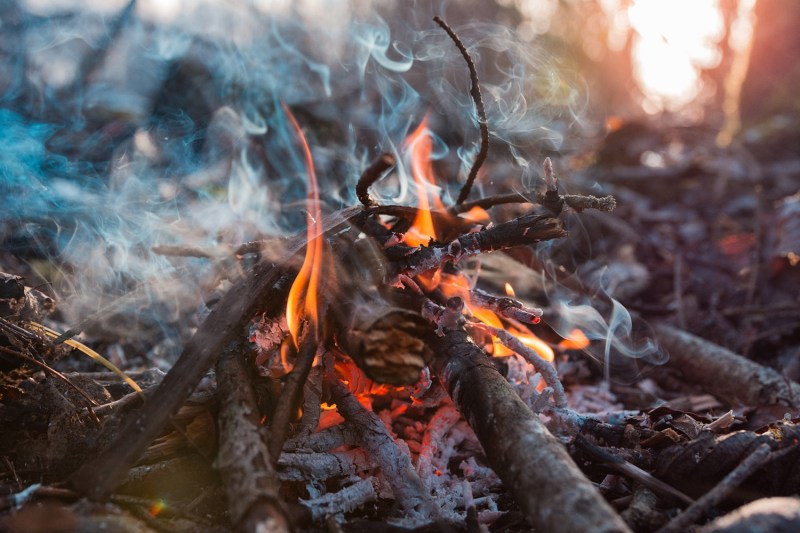The warm weather outdoor season is finally upon us. Despite COVID-19 shutting down just about everything, camping, hiking, and escaping into nature are all on the shortlist of things we can still enjoy right now. Whether planning a weekend state park escape or a multi-day backpacking excursion into the wild, we should all strive to be good stewards of the earth. One of the simplest ways for campers to do just that is to gather their firewood responsibly before building a fire.
Check Local Campfire Regulations
It’s easy to assume that, because you’re in a remote area, campfires must be fair game. Long before you start gathering firewood, check the local regulations to see what’s allowed. In some regions, particularly those susceptible to extreme wildfires, the rules may change daily. Wind, humidity, local lightning storms, and a host of other factors come into play. Once you know where you’ll be making camp, check with the agency (e.g., National Park Service, Bureau of Land Management, U.S. Forest Service, etc.) that manages that land. They can tell you whether campfires are currently allowed in that area. Even if fires are permitted, check that it’s legal to gather wood and split it directly around your campsite.

Shop Local
Invasive species are a threat to wilderness areas throughout the world. It’s tempting to bring firewood from home to your campsite, but this can threaten local ecosystems. Although it’s more expensive, the best option for “gathering” firewood is to buy it locally. The closer it’s purchased to your campsite, the better, whether that’s at the campground itself or a nearby convenience store.
Deader Is Better
Perhaps the most essential rule of gathering firewood responsibly is never to strip live trees. It’s bad for the environment, and it’s not sustainable. Imagine if every camper to that area — dozens, even hundreds throughout a season — pulled their firewood from the trees closest to their campsite. But, even from a selfish perspective, fresh, green wood is not going to burn well. Repeat after me: “Deader is better.” If it snaps easily under your boot, it’s ready to burn.
But Let Dead Logs Lie
Dead logs might look like great fire-stoking material, but there are two reasons to leave them be. The first is that they make great homes and hiding spots for smaller wildlife, including mammals, reptiles, and insects. They’re a vital part of any ecosystem. Second, the oldest logs are often damp or soaked completely through, so they make for terrible campfire wood.

Size Matters
Gathering oversized pieces of wood is fine, so long as they’re cut to size before adding them to the fire pit. For front-country camping, consider packing a bow saw. Leave the ax at home as it’s overkill for simply cutting logs to size. Backcountry campers concerned with pack weight might bring a hatchet, which is lightweight, compact, and incredibly versatile even beyond fire-making purposes. Whatever the tool, always cut firewood to fit completely inside your fire pit. This will help keep your campfire contained to a manageable size that’s less likely to get out of control.
Pay It Forward
In some national and state parks, campers are not allowed to leave firewood behind. It must be taken with them or burned. Another option is to give any leftover wood to a fellow camper. It’s the right thing to do legally, environmentally, and for the simple pleasure of paying it forward.
Remember that safely extinguishing your campfire is just as important as gathering the wood and building it in the first place. Check out our tips for putting out a fire without hurting yourself in the process.
Editors' Recommendations
- How to make nutritious and delicious trail snacks: Your DIY guide
- Ditch the GPS: How to navigate using a map and compass
- There’s actually a great reason for that red light on your camping headlamp
- RVing to check out April’s solar eclipse? Check out one of these top camping sites for the best views
- Forget rice: This is how to actually fix a wet iPhone, according to Apple


